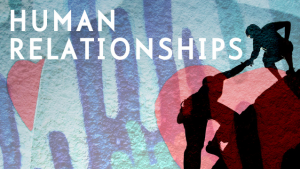
What do people desire in a mate?
Do we differ substantially from our ancestors?
What impact has western civilization had on our selection process?
Are human males and females driven by mating practices that insure survival of the fittest?
Are men selected by women because they have a particular reproductive advantage, i.e., plumage like a peacock? Do females really select their mate and what are the criteria?
What criteria do males and females use for mate selection?
Desires in a mate evolved by natural selection.
Our ancestors struggled to keep warm by the fire, hunted for meat for their kin, gathered nuts, berries, herbs, avoided dangerous animals and hostile humans.
If we selected a mate that failed to deliver these resources, survival would be tenuous and reproduction would be at risk.
The asset of having a mate who was able to provide abundant resources, protected us and our children and devoted time and energy to the family is obvious.
As a result of the powerful survival and reproductive advantages that were reaped on those of our ancestors who chose a mate wisely. Clear desires in a mate evolved and we carry those desires with us today.
-
Men’s desires:
Ancestral man: needed women of high fertility and needed to insure paternity of offspring.
Mating with women of high fertility insured high reproductive success. But fertility could not be determined by our ancient ancestors.
Two cues were used: physical cues to youth and health. Younger women were more reproductive than older women.
Men evolved desires that focused on physical appearance in general and youth in particular.
Evidence from 37 cultures, over 10,000 individuals supports this. Men placed a greater premium on physical attractiveness than do women.
Men universally desire a younger wife. Men also desire women with a low waist to hip ratio (small waist relative to hips) which is a key indicator of fertility and symmetrical body features as evidence for good health.
 Facial features such as clear, smooth skin, eyes, lustrous hair, full lips, absence of sores or lesions are universally regarded as attractive.
Facial features such as clear, smooth skin, eyes, lustrous hair, full lips, absence of sores or lesions are universally regarded as attractive.
Selecting fertile women would do little good if the paternity was compromised, i.e., females mated with several males. Women are 100% sure that their child is their own. Male paternity is always less than 100%.
The value people place on chastity is highly variable, ranging from indispensable in China to irrelevant in Sweden and the Netherlands.
In 62% of the cultures, i.e., U.S. and Europe, men place fidelity as the #1 desired characteristic in a potential spouse.
B.Women’s Desires:
Heavy parental investment, 9 months gestation, years of breast feeding. Women constitute an exceptionally valuable asset of man.
Parental investment is a critical factor in sexual selection, i.e., the sex that invests more in offspring is selected to be highly choosy about mates.
Ancestral women selected mates with resources and who showed a commitment to invest those resources in them and their children.
Women in all continents, all political systems, all racial, religious backgrounds, place more value on good financial prospects.
Overall, women value financial resources in a mate about 100 percent more than men do, i.e., 2x as much.
There are cultural variations. Japanese women value good financial prospects 150% more than Japanese men. Women from the Netherlands value that criteria less than do women from the rest of the world.
Women also valued ambition, industriousness, older age and social status.
Also physical qualities as good health, size, strength, athletic prowess: cues that signal delivery of resources over the long run and protection of herself and her children. Also dependability and emotional maturity.
C.Common desires:
Kindness in mate, intelligence, love and mutual attraction.
D.Mate selection
Desires evolved by natural selection
Ancestral needs: food, warmth, protection, fertility
Male desires: fertility, paternity (faithful, caring)
Female desires: financial prospects (provider); family values (protector)
- Love at First Sight
Symmetrical sense of balance is attractive, i.e. how males and females view each others features.
F.Pheromones
Chemicals released by one animal that cause a behavioral change in another
Vomeronasal organ: (VNO)
- -Small chemosensory organ in nose
Detects chemical signals that mediate sexual and territorial behavior
Human:
Male VNO responds to estrogens
Females VNO responds to androgens
Females: Synchronization of menstrual cycles
More then 100 genes code for receptors
Different receptors mediate different behavioral responses
Example: Sexual arousal, aggression
Signals bypass brain higher cognitive centers and stimulate subconcious responses that we are not aware of..

